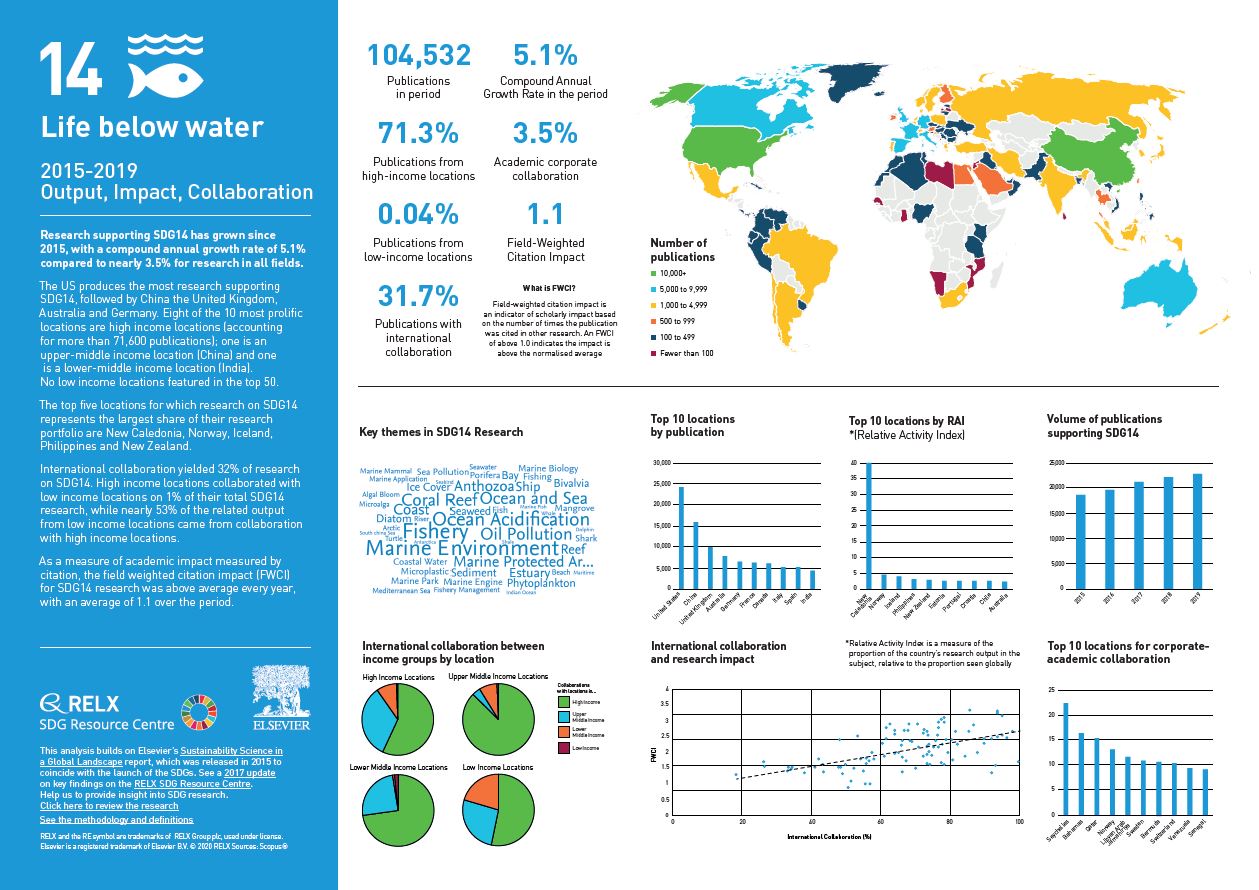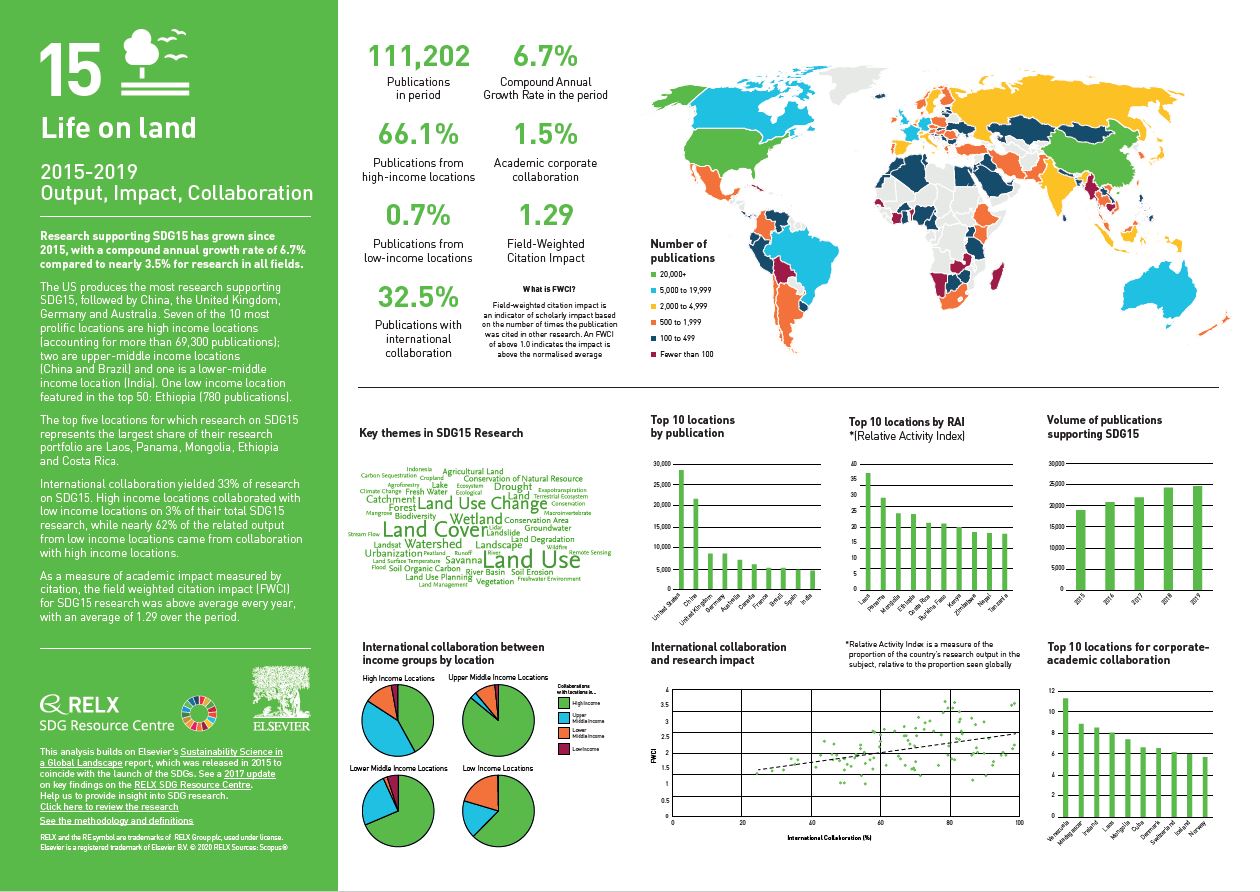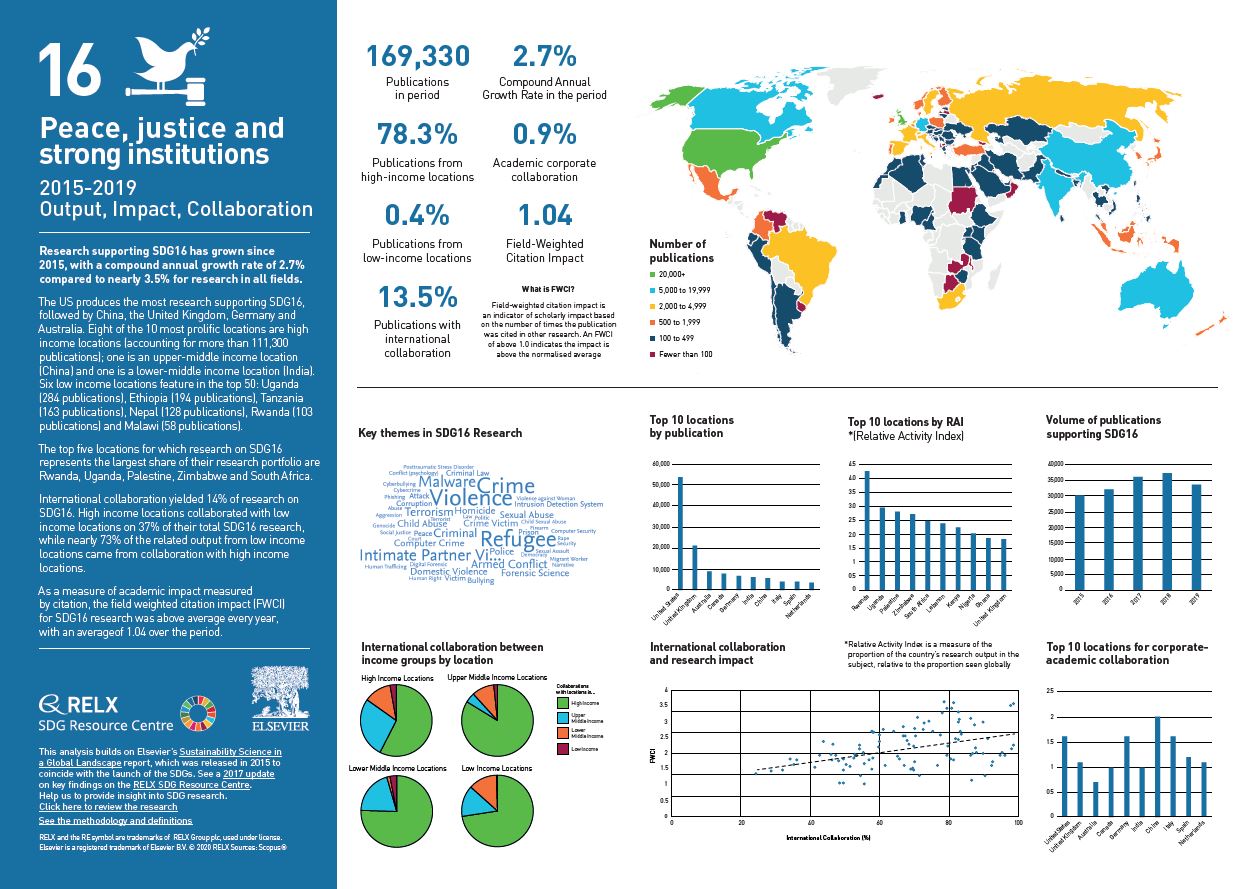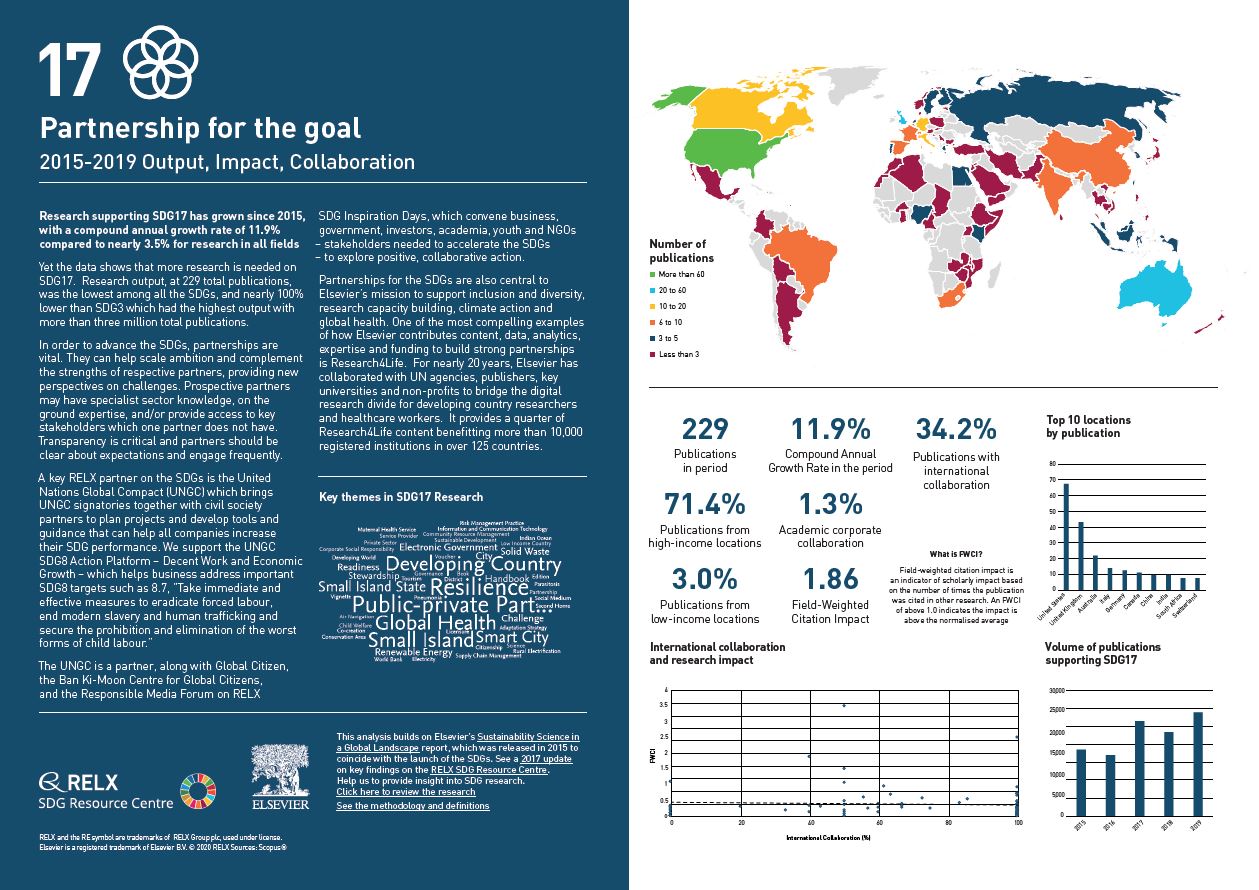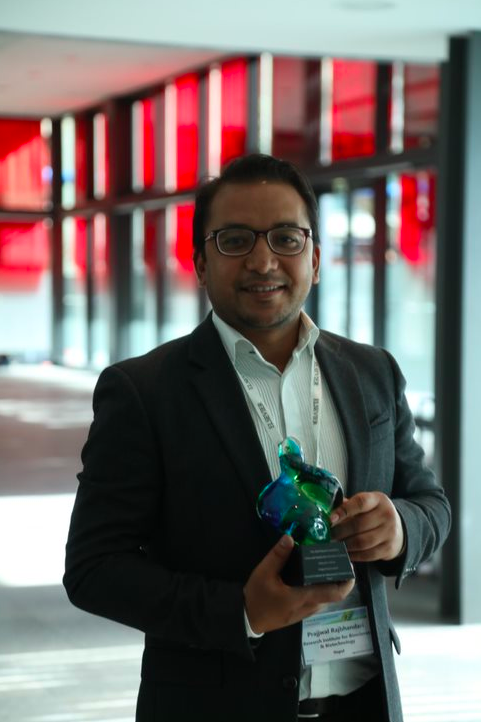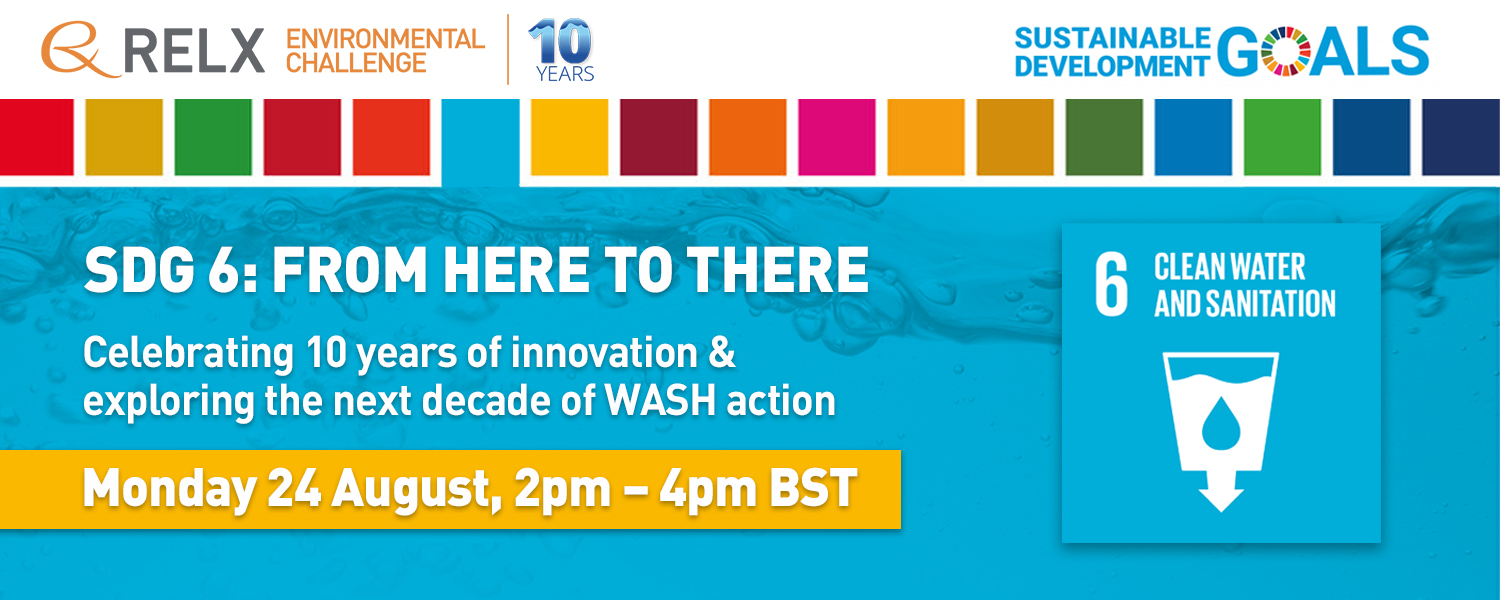RELX,
September 2020
Over the past five years, we have used data and analytics to help the research and healthcare communities navigate the sea of research and to put collaboration, both interdisciplinary and international, at the heart of scientific progress on the SDGs. View findings for SDG 14.
RELX,
September 2020
Over the past five years, we have used data and analytics to help the research and healthcare communities navigate the sea of research and to put collaboration, both interdisciplinary and international, at the heart of scientific progress on the SDGs. View findings for SDG 15.
RELX,
September 2020
Over the past five years, we have used data and analytics to help the research and healthcare communities navigate the sea of research and to put collaboration, both interdisciplinary and international, at the heart of scientific progress on the SDGs. View findings for SDG 16.
RELX,
September 2020
Over the past five years, we have used data and analytics to help the research and healthcare communities navigate the sea of research and to put collaboration, both interdisciplinary and international, at the heart of scientific progress on the SDGs. View findings for SDG 17.
Elsevier,
17th September 2020
In 2018, Dr. Prajwal Rajbhandari was awarded the first prize of the Elsevier Foundation Green and Sustainable Chemistry Challenge for his project, “Guava leaves as natural preservatives for farmers of Nepal.” Due to a lack of viable non-toxic preservatives, or cold chain technologies, one-third of Nepal’s produce is spoiled before it reaches market each year. Dr. Rajbhandari’s project taps the antioxidant and antimicrobial properties of guava leaves to make a water-based, sprayable natural preservative, contributing to SDGs 2, 12 and 15. Two years later, we interviewed Dr. Rajbhandari about his experience as a winner, as well as the upcoming steps for his project.
Brightmine,
15th September 2020
Amid the coronavirus pandemic, a new school year has started, and it’s one unlike any we have ever seen before. Many working parents must grapple with the challenges of hybrid or 100% remote learning for their children, while employers must look for creative solutions to support employees who are balancing in-person or remote work with childcare needs. Topics covered support SDG 8 (decent work and economic growth).
RELX,
26th August 2020
On Monday 24 August 2020 – at the beginning of World Water Week - RELX announced the winners of the 2020 RELX Environmental Challenge. Now in its 10th year, the RELX Environmental Challenge supports innovative solutions that improve sustainable access to safe water and sanitation where it is at risk, contributing to SDGs 1, 3, 6 and 10.
Brightmine,
26th August 2020
Although financial wellness benefits have been rising in popularity for some time, the demand for them has grown exponentially this year due to the coronavirus (COVID-19) pandemic and resulting recession. Such benefits can be a vital resource for employees during this stressful time. Advancing SDG 3, this article covers employer considerations around designing a successful financial wellness programme.
Brightmine,
18th August 2020
In this podcast, author Ira Wolfe joins XpertHR Legal Editor David Weisenfeld to discuss how companies and HR must adjust to meet recruiting challenges when the future of work seems so uncertain. Topics covered support SDG 8 (decent work and economic growth).
